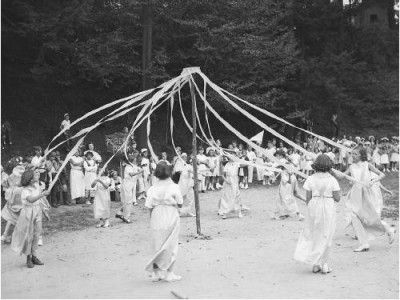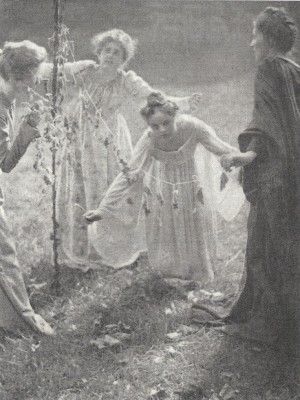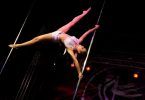Discover the intriguing historical connections between Paganism and pole dancing. From the ancient Maypole celebrations to modern interpretations, this article delves into the fascinating world of pole dancing rooted in pagan traditions.
Paganism and Pole Dancing
Various types of dance that included some kind of pole were already known in the Western world from very early.
They were about dancing rituals originating from paganism, The Roman and Celtic times and even pro-Christian traditions of the Druids.
The Maypole: A Pagan Celebration of Fertility
One of the most common happenings of these kinds was the “Maypole”, a form of folk dance from Germany, England and Sweden.
It dates back to the 12th century and it was a pagan, Roman celebration of fertility with the pole symbolizing the phallus.
Many historians claim that the Maypole was part of the German fertility celebrations. In such cases, the dancers usually danced around a blooming tree. The ritual took place on May 1st, even though in Sweden it was around June 21st or 25th during the summer solstice.
The Maypole consisted of a group of young girls who danced around a pole decorated with flowers and other emblems. It had two forms:
In the first one, the girls just danced around it and this was the most popular version. In the second one, there was an external circle of girls and an internal one. Each of the girls held colorful ribbons which were attached on the top of the pole. The dance included circular steps in order to move the ribbons, weave them around the pole and then undo them or weave a kind of web around the pole.
The Influence of Roman and Celtic Traditions
The execution of this ritual signified the beginning of Bealtaine, an ancient Celtic celebration on May 1st. It is directly connected with the worship of the Roman Goddess called Flora and the Floralia. This celebration became known in England after the Roman conquest and it was actually a 5-day celebration for the 1st of May. Before the Roman invasion of the UK, the Druids, who thrived there and in other western parts of Europe, used to celebrate May 1st as the middle day of the year because, according to Celtic religious beliefs, October was the last month of the year.
Evolution of the Maypole: From Pagan Ritual to Christian Ban
The evolution of the Maypole represents a fascinating journey from its roots as a pagan ritual to its eventual Christian ban. With the rise of Christianity and its efforts to suppress pagan traditions, the Maypole and its associated festivities faced censure. Despite the ban, remnants of this ancient practice endured, and over time, the Maypole transformed into a symbol of secular merriment and cultural heritage, showcasing the rich historical tapestry behind this age-old tradition.
Medieval Maypoles and English Traditions
During the Middle Ages, the common feature among dance events is the pole which is connected to the Maypole. Many medieval artifacts reflect towering wooden poles with ribbons hanging on them placed in the various villages.
One other custom is the English Maypole. People celebrated the beginning of summer and May 1st by placing wooden poles in their gardens which were decorated with flowers. People danced around the pole celebrating the rebirth of nature. Around the 19TH century, colourful ribbons were added on the poles, an Italian element taken from the Italian theatre performances of the era.
Modern Revival and Educational Significance
In the 18th century, the Maypole takes the form of a traditional dance popular in Italy and France. Travelling troupes of that time, include the Maypole in the performances of the theatres of London making it even more popular. Later on, a college for educators approved and adopted the Maypole, which soon spread to most of parts of central and southern England. The dance was admitted as part of the physical education curriculum for girls and it remained popular in primary schools in England and the United States in 1950. Nowadays, the Maypoles are an integral part of many celebrations in elementary schools.
Epilogue
The intertwining of Paganism and pole dancing showcases the rich historical tapestry behind this art form. As we explore the ancient roots and connections, we gain a deeper appreciation for the diverse influences that have shaped pole dancing into what it is today.
References:
https://graecomuse.wordpress.com/2012/06/23/from-pole-to-pole-the-history-of-pole-dancing-and-fitness
http://diaryofawrinkle.com
http://rednights.blogspot.gr/2007/05/blog-post_04.html
http://www.historicalharmonies.org/mapypoledanceorigins.htm








